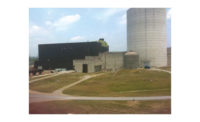The U.S. Energy Dept. kicked off its effort to fast-track commercialization of clean energy technologies, issuing “road maps” for public and private investors to help advance three promising ones—clean hydrogen, long duration energy storage and advanced nuclear power. DOE also issued sobering estimates that development and deployment could cost more than $300 billion by 2030 and more than $1.2 trillion by 2050.
DOE will invest billions of dollars in large-scale demonstration projects and technology deployments over the next decade, with the goal of unlocking trillions of dollars in private investment, officials said during a March 21 webinar to launch the effort, dubbed Pathways to Commercial Liftoff.
“Hopefully the reports will help the private sector to move,” said Vanessa Chan, the agency’s chief commercialization officer and director of the Office of Technology Transitions.
The objective is to chart a course to hit critical long term decarbonization goals set by the administration, including net-zero emissions by 2050.
Each technology has its challenges. Long duration battery storage is still maturing as a technology and requires costs to drop by 50% while operational performance is increased, Chan said. DOE seeks deployment of 225 GW to 460 GW by 2050, which will require $330 billion in capital investment.
Advanced nuclear deployment will require orders booked for 10 new reactors of the same design by 2025 to compliment renewables, Jigar Shah, director of DOE's Loan Programs office told webinar attendees. One problem is that utilities are afraid of cost overruns and “abandonment risk,” he said, while noting that engineering, procurement and construction partnerships such as the one between the Tennessee Valley Authority and Ontario Power should help with project delivery issues.
Shah also said that certain coal-fired power plants can be reused and become part of the coal to nuclear transition, such as the Natrium advanced nuclear reactor demonstration project under construction at a former Wyoming coal plant site that has both federal and private backing. “It’s only possible if we can build a skilled workforce and have community buy-in,” he said.
Deploying about 200 GW of nuclear capacity in the U.S. could require $35 billion to $40 billion by 2030 and some $700 billion in capital by 2050, DOE said. “Challenges with transmission expansion, interconnection, land-use intensity and other factors limiting renewables build-out are likely to make nuclear an even more attractive option,” according to the Energy Dept.
Balancing Hydrogen Demand and Supply
The agency has a solicitation under way to develop six to 10 hydrogen hubs, at a cost of $7 billion, that it hopes will swiftly catalyze an additional $7 billion in private investment, said David Crane, director of DOE’s Office of Clean Energy Demonstrations. The hydrogen technology will be built and operated by the private sector. “The role of DOE is to enable it and accelerate it,” he said.
The issue with a new commodity such as hydrogen is offtake, in which demand tends to rise in small increments, but supply comes on in big chunks, Crane said. An offtake agreement is an arrangement between a producer and a buyer to purchase or sell portions of the producer's upcoming goods.
“It’s a winding road with speed bumps and we want to be the best partner we can be to help solve problems along the way,” he said.
Production is the first issue hydrogen faces, but reducing costs is critical so the market can be self-sustaining when project tax credits in the Inflation Reduction Act expire, Hannah Murdoch, a DOE senior advisor, said during the webinar.
The first downstream applications for hydrogen will be ammonia production, oil refining and heavy-duty transportation. Next is expected offtake for aviation and marine vessels. “Long-term offtake is the biggest challenge,” said Jason Munster, director of analysis for the Office of Clean Energy Demonstrations.
With investments from $85 billion to $215 billion through 2030, clean hydrogen production has the potential to scale to about 10 million metric tons per year across industrial, transportation and power sector use. It could reach 50 million metric tons per year by 2050, DOE said.
DOE's three market development documents are designed to be updated as the commercialization outlook on each technology changes, considering the “constantly and rapidly evolving market, technology and policy environment,” the agency said.
DOE officials said they will seek constant feedback from industry. More reports will be issued in coming months.
The three reports were developed using stakeholder input and system-level and project-level modeling. “They do not reflect DOE official policy or strategic plans; they are a resource intended to inform decision-making across industry, investors, and the broader stakeholder community,” the agency said.





